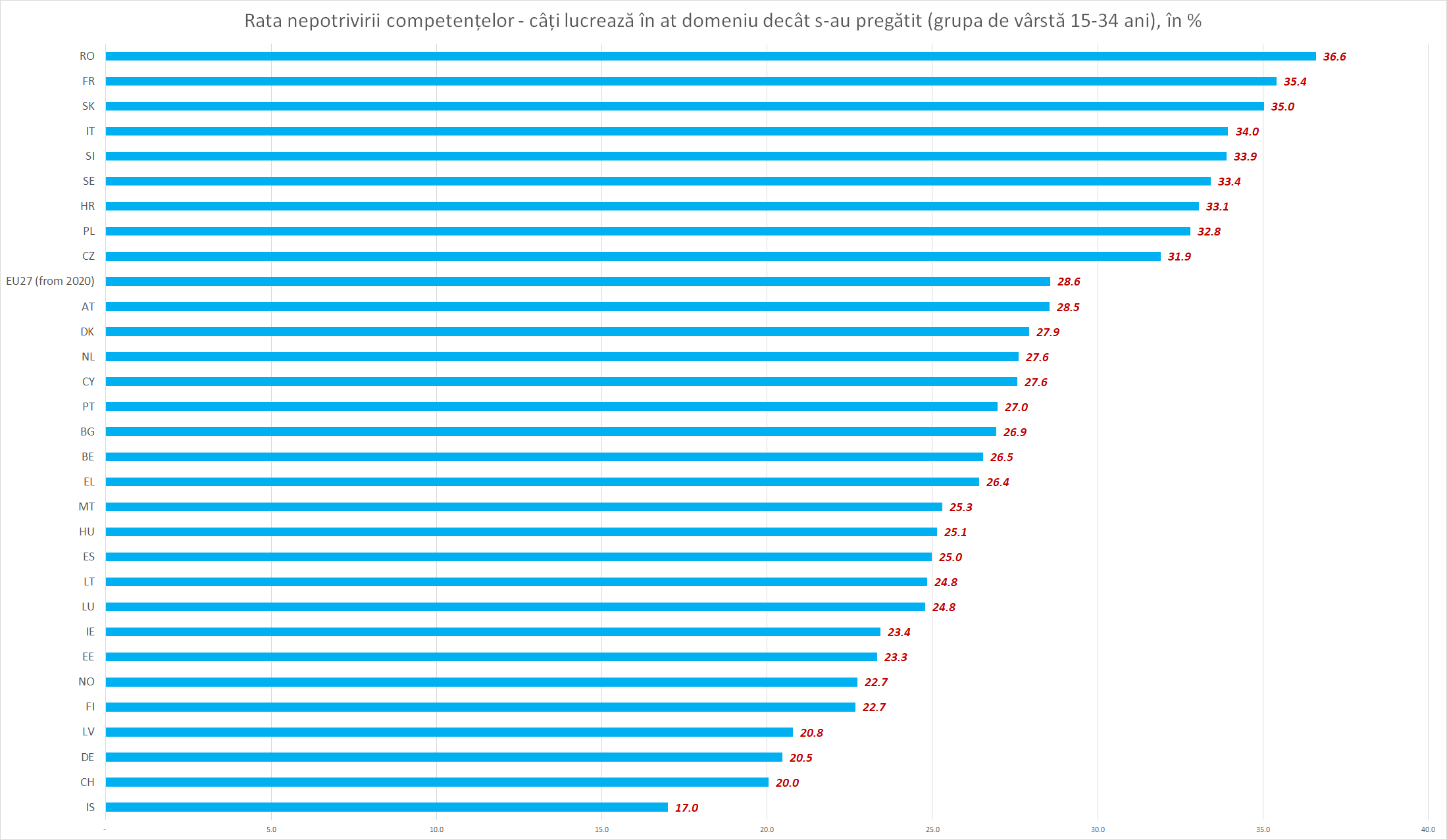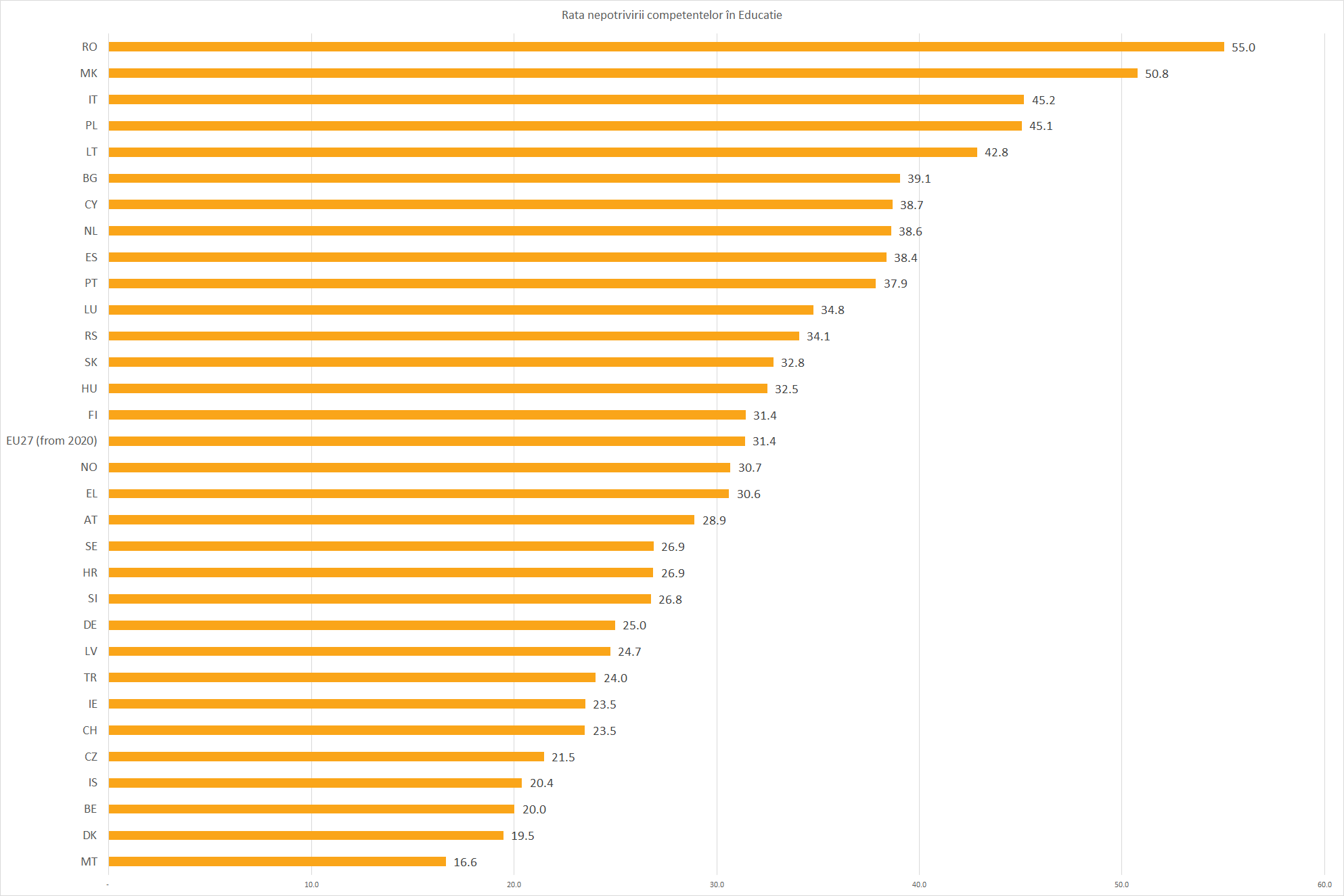
Radu Ispas graduated in sociology, but works as a truck driver. Another colleague from the company, George, was engaged in agronomy. But they are not the only ones who work in completely different fields than they studied. What these two don’t know is that Romania is the country with the highest level of mismatch between work and the field in which workers studied.
The bad thing is that in Romania this degree of mismatch has increased in the last 5 years, while in other countries it is decreasing due to public policies that solve problems in education so that the real demand for labor in the economy matches as well as possible with the supply.
The skills mismatch ratio is defined as the mismatch between a person’s current occupation and the field in which they studied. In the 15-34 age group, according to some experimental statistics published by Eurostat, we are the worst in this section. People who work in a different field in terms of education are considered people with a horizontal skill mismatch.
There is also vertical disparity, which refers to those who perform work below their level of training (those with medical degrees working as simple assistants, for example), or those who work in a more skilled position than their training would allow.
Below is the level of skills mismatch at the European level:

It is worth noting the states in the “tail” of the rating, where people actually work in the fields they studied: Iceland, Switzerland and Germany.
The criterion used by Eurostat is represented by the correspondence of the competences acquired through education with the competences required for the position held.
Skill mismatches by field of education can be relevant for labor market analysis, as “mismatched” people are often frustrated by the fact that they have spent years of their life doing something that does not add value to them, and this can mean higher costs for the employer. associated with the qualifications of an unprepared employee for work, and the lower benefit of an “unsuitable” employee
Eurostat also analyzes detailed data for various fields: education, health care, agriculture, etc.
In education, we are still in the first place, with a degree of discrepancy of 55%. We are followed by Macedonia, Italy and Poland. At the opposite pole we find Malta, Denmark and Belgium.

Fields of education are defined according to the 2013 ISCED-F classification, and occupations are defined according to the 2008 ISCO.
In the field of health care, we are doing very well, among the top five countries in Europe with a non-compliance rate of 10% (the worst are Cyprus and Macedonia with a non-compliance rate of almost 40%).
In agriculture, we have a mismatch ratio of almost 60% (which puts us in a better position than Bulgaria or Hungary), but far from Switzerland, Denmark and Poland, which are the best.
In engineering, we rank fifth from the bottom, with the smallest differences found in Switzerland and Germany.
In science, the main discrepancies (penultimate place), the countries at the top of the rating are Switzerland, Germany and Latvia.
In the social sphere, we see the smallest mismatch of qualifications in Luxembourg and Israel, and the largest in Slovenia and Italy. We’re about in the middle.
Source: Hot News RO
Anna White is a journalist at 247 News Reel, where she writes on world news and current events. She is known for her insightful analysis and compelling storytelling. Anna’s articles have been widely read and shared, earning her a reputation as a talented and respected journalist. She delivers in-depth and accurate understanding of the world’s most pressing issues.